
Dig Dug is a maze arcade video game developed by Namco in 1981 and released in 1982, distributed in North America by Atari, Inc. The player controls Dig Dug to defeat all enemies per stage, by either inflating them to bursting or crushing them underneath rocks.

Mappy is an arcade game by Namco, originally released in 1983 and distributed in the United States by Bally Midway. Running on the Namco Super Pac-Man hardware modified to support horizontal scrolling, the game features a mouse protagonist and cat antagonists, similar to Hanna-Barbera's Tom and Jerry cartoon series. The name "Mappy" is likely derived from mappo (マッポ), a slightly pejorative Japanese slang term for policeman. The game has been re-released in several Namco arcade compilations. It spawned a handful of sequels and a 2013 animated web series developed by cartoonists Scott Kurtz and Kris Straub.
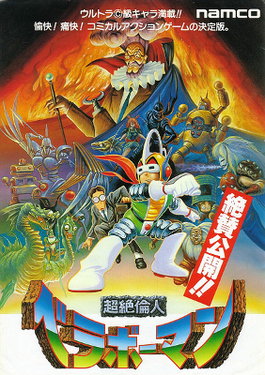
Chōzetsurin Jin Bravoman is a 1988 beat'em up arcade video game developed and published in Japan by Namco. Described as a "comical action game", the player controls the titular character, a bionic superhero with telescopic limbs, as he must defeat the villainous Dr. Bomb before he takes over the world. Bravoman can use his arms, legs and head to defeat enemies, and can also crouch and jump over them. The game ran on the Namco System 1 arcade board.

The Tower of Druaga is a 1984 arcade action role-playing maze game developed and published in Japan by Namco. Controlling the golden-armored knight Gilgamesh, the player is tasked with scaling 60 floors of the titular tower in an effort to rescue the maiden Ki from Druaga, a demon with eight arms and four legs, who plans to use an artifact known as the Blue Crystal Rod to enslave all of mankind. It ran on the Namco Super Pac-Man arcade hardware, modified with a horizontal-scrolling video system used in Mappy.
Namco Museum is a series of video game compilations developed and published by Bandai Namco Entertainment for home video game consoles. The first title in the series, Namco Museum Vol. 1, was released for the PlayStation in 1995. Entries in the series have been released for multiple platforms, including the Game Boy Advance, PlayStation 2, PlayStation Portable, Nintendo DS and Xbox 360. the latest being Namco Museum Archives Vol. 2, released in 2020.

Star Force, also released in arcades outside of Japan as Mega Force, is a vertical-scrolling shooter computer game released in 1984 by Tehkan.

Air Combat is a 1995 combat flight simulator developed and published for the PlayStation by Namco. Players control an aircraft and are tasked with completing a series of missions, with objectives ranging from destroying formations of enemies to protecting a specific target from enemy fire. Missions award money that is used to purchase new jet fighter, each with its own unique weapons and strengths.
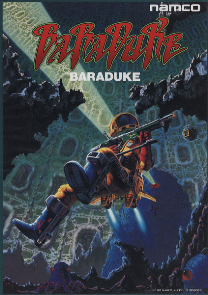
Baraduke, renamed Alien Sector in some regions, is a run and gun video game released for arcades by Namco in 1985. A home version was published for the X68000.
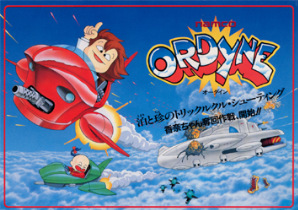
Ordyne is a horizontal scrolling shooter arcade game, which was released by Namco in 1988 only in Japan. It runs on Namco System 2 hardware, and was ported to the TurboGrafx-16 in 1989, with releases in both Japan and North America. It features a cameo from Pac-Man, as the "Stock bomber shot" - and the arcade version was also included in Namco Museum Volume 4 for the Sony PlayStation. The TurboGrafx-16 version was released on the Wii's Virtual Console on May 7, 2007 in North America and on August 21, 2007 in Japan; it is officially described by Namco as a "comical action shooter". The shopkeeper, Miyuki Chan, also appeared in a taco shop in Mach Breakers in 1994 and in a flying loudspeaker-shaped shop in Project X Zone 2 in 2015.

Hopping Mappy is an arcade game which was released by Namco in 1986. It is the sequel to Mappy, which was released three years earlier. The game was ported to the Wii Virtual Console in Japan on June 2, 2009.

Dragon Spirit is a 1987 vertical-scrolling shooter arcade game developed and published by Namco. In North America, it was distributed by Atari Games. Controlling the dragon Amul, the player must complete each of the game's nine areas to rescue the princess Alicia from the demon Zawell. Similar to Namco's own Xevious, Amul has a projectile weapon for destroying air-based enemies and a bomb for destroying ground enemies. It ran on the Namco System 1 arcade board.
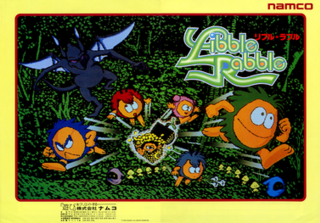
Libble Rabble is a 1983 puzzle arcade video game developed and published in Japan by Namco. The player is tasked with using two colored arrows, Libble and Rabble, to wrap them around pegs and surround small creatures known as Mushlins to "harvest" them under a time limit. The player can also uncover treasure chests that will have the player searching the stage for items in order to access a special bonus stage. It ran on the Namco Libble Rabble hardware, one of the only games to do so.

Sky Kid Deluxe is a horizontally scrolling shooter released in arcades by Namco in 1986. It is the sequel to Sky Kid, which was released in the previous year. It was the first game to run on the company's System 86 hardware. It was also the first game from the company to use a Yamaha YM2151 FM sound chip for its music. The gameplay is more difficult than the original, and also introduces several new enemies and missions.

Mappy-Land is a video game console-only sequel to the 1983 Namco/Midway arcade game Mappy. The game was developed by TOSE and published by Namco in Japan and Taxan in North America for the Nintendo Entertainment System. It was later released by Bandai Namco Entertainment for the Wii U Virtual Console worldwide in February 2015, and on the Nintendo Switch Online Service in March 2022.
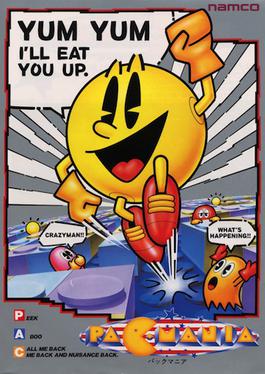
Pac-Mania is a cavalier perspective maze game that was developed and released by Namco for arcades in 1987. In the game, the player controls Pac-Man as he must eat all of the dots while avoiding the colored ghosts that chase him in the maze. Eating large flashing "Power Pellets" will allow Pac-Man to eat the ghosts for bonus points, which lasts for a short period of time. A new feature to this game allows Pac-Man to jump over the ghosts to evade capture. It is the ninth title in the Pac-Man video game series and was the last one developed for arcades up until the release of Pac-Man Arrangement in 1996. Development was directed by Pac-Man creator Toru Iwatani. It was licensed to Atari Games for release in North America.

Namco Museum DS is a classic arcade game compilation published by Namco Bandai Games. It was originally released for the Nintendo DS on September 18, 2007.
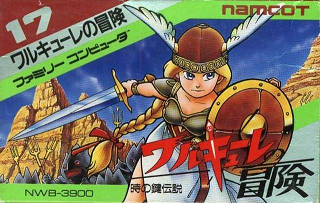
Valkyrie no Bōken: Toki no Kagi Densetsu is a video game developed and published by Namco. It was released in Japan for the Family Computer on August 1, 1986, for the Virtual Console on March 20, 2007, for the Nintendo 3DS on September 4, 2013 and for the Wii U on February 4, 2015.

Bandai Namco Studios Inc. is a Japanese video game developer headquartered in Kōtō, Tokyo. Its offices in Malaysia and Singapore, Bandai Namco Studio Malaysia and Bandai Namco Studios Singapore, are based out of Selangor, Malaysia and Infinite Studios, Singapore respectively. Bandai Namco Studios is a subsidiary of Bandai Namco Entertainment, which itself is a subsidiary of Bandai Namco Holdings. The company works under its parent company as a keiretsu; Bandai Namco Studios creates video games for home consoles, handheld systems, mobile devices and arcade hardware, while Bandai Namco Entertainment handles the managing, marketing and publishing of these products.

Mr. Driller A is a 2002 puzzle video game developed and published in Japan by Namco for the Game Boy Advance. The fourth installment in its Mr. Driller series, players control one of seven characters and must make it to the bottom of the level by destroying colorful formations of blocks. A adds several new mechanics to the gameplay of its predecessors, such as a virtual pet named the "Pacteria" that players can grow and care for.

Pac-Man 99 is a maze video game with battle royale elements developed by Arika and published by Bandai Namco Entertainment for the Nintendo Switch. It was released through the Nintendo Switch Online service on April 7, 2021.



















